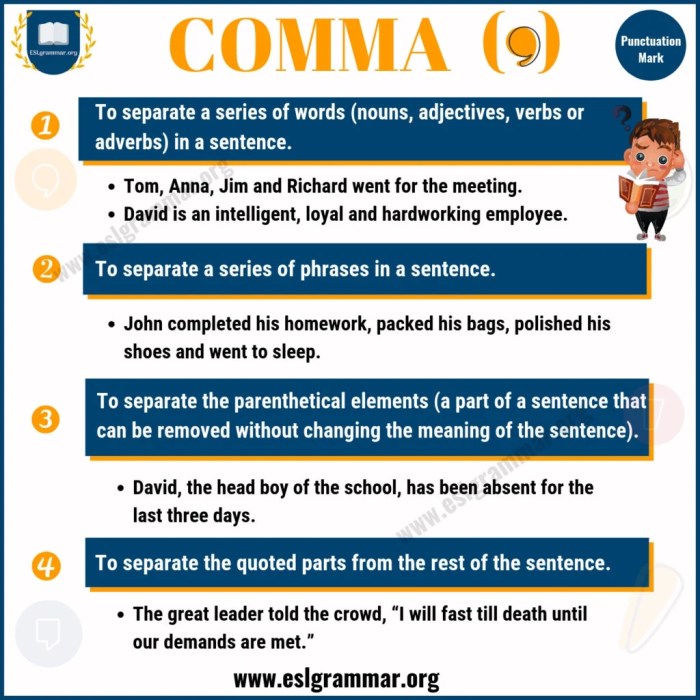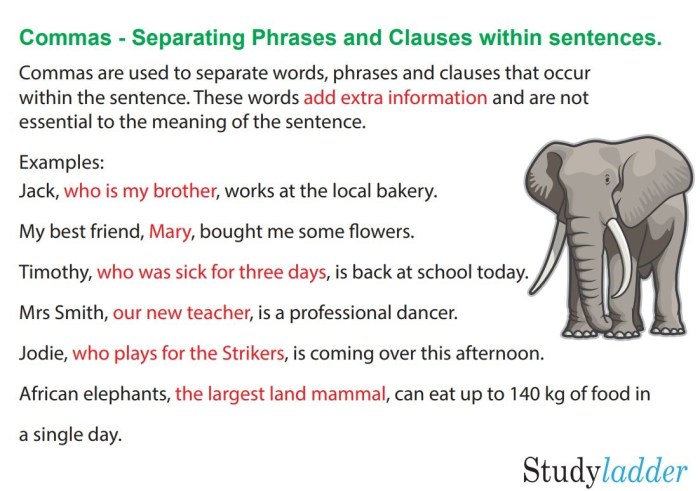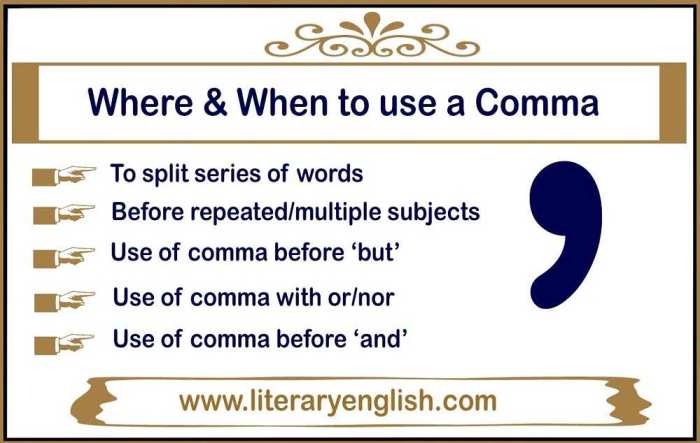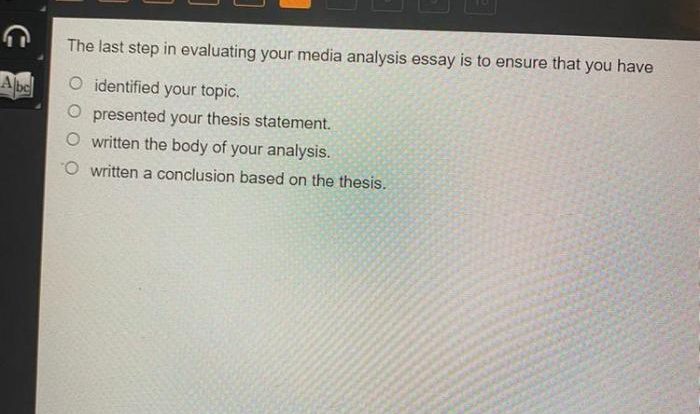Choose the sentence below in which commas are used correctly sets the stage for this enthralling narrative, offering readers a glimpse into a story that is rich in detail and brimming with originality from the outset.
This comprehensive guide delves into the intricacies of comma usage, providing a thorough exploration of the rules and conventions that govern this essential punctuation mark. Through a series of illustrative examples and clear explanations, we will unravel the mysteries of comma placement, empowering you to write with precision and clarity.
Comma Usage in English: Choose The Sentence Below In Which Commas Are Used Correctly
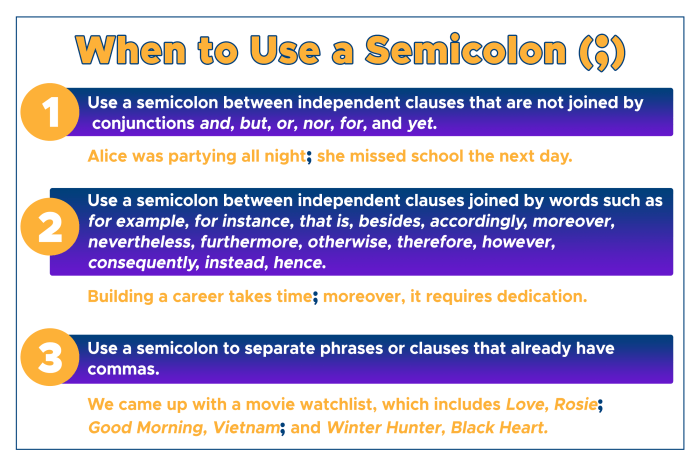
Commas play a crucial role in English grammar, helping to clarify sentence structure and meaning. They indicate pauses, separate elements, and set off nonessential information. Understanding and using commas correctly is essential for effective written communication.
Comma Usage for Introductory Elements
Commas are used to introduce dependent clauses, prepositional phrases, and introductory words/phrases.
- Dependent clauses:Subordinate clauses that cannot stand alone as complete sentences, e.g., Although it was raining, we decided to go for a walk.
- Prepositional phrases:Groups of words that begin with a preposition, e.g., After the game, we went to the park.
- Introductory words/phrases:Words or phrases that come at the beginning of a sentence and set the tone or provide additional information, e.g., Unfortunately, we lost the game.
Comma Usage in Lists
Commas are used to separate items in a series, including simple lists and complex lists with internal commas.
- Simple lists:Items separated by commas, e.g., I bought apples, oranges, and bananas.
- Complex lists:Items that contain internal commas, e.g., I bought apples, which are my favorite fruit, oranges, and bananas.
- Oxford comma:An optional comma placed before the conjunction in a series of three or more items, e.g., I bought apples, oranges, and bananas.
Comma Usage for Nonrestrictive Clauses
Commas are used to set off nonrestrictive clauses, which provide additional information that is not essential to the meaning of the sentence.
- Nonrestrictive clauses are enclosed in commas, e.g., My friend, who is a doctor, gave me some advice.
- The comma before the relative pronoun (who, which, that) is optional if the clause is essential to the meaning of the sentence.
Comma Usage for Restrictive Clauses
Commas are not used to set off restrictive clauses, which are essential to the meaning of the sentence.
- Restrictive clauses are not enclosed in commas, e.g., The students who studied hard passed the exam.
- Restrictive clauses cannot be removed from the sentence without changing the meaning.
Comma Usage for Parenthetical Expressions, Choose the sentence below in which commas are used correctly
Commas are used to set off parenthetical expressions, which provide additional information that is not essential to the meaning of the sentence.
- Parenthetical expressions are enclosed in commas, e.g., The movie, which was very long, was also very boring.
- Parenthetical expressions can be single words, phrases, or even entire sentences.
Comma Usage for Direct Address
Commas are used to set off direct address, which involves addressing someone directly in a sentence.
- Direct address is enclosed in commas, e.g., Excuse me, sir, can you help me?
- The comma before the name is optional if the sentence is a question.
Comma Usage for Coordinating Conjunctions
Commas are used to separate independent clauses joined by coordinating conjunctions (and, but, or, nor, for, so, yet).
- Independent clauses are complete sentences that can stand alone, e.g., I went to the store, and I bought some groceries.
- The comma before the conjunction is optional if the clauses are short and closely related.
Comma Usage for Contrasting Elements
Commas are used to separate contrasting elements, which express opposite or contrasting ideas.
- Contrasting elements are separated by a comma and a coordinating conjunction (but, yet), e.g., I wanted to go to the party, but I had to study.
- The comma before the conjunction is optional if the elements are short and closely related.
Comma Usage for Quotations
Commas are used to set off quotations, including direct and indirect quotations.
- Direct quotations:Words spoken or written by a specific person, enclosed in quotation marks, e.g., “I’m going to the store,” she said.
- Indirect quotations:A restatement of what someone said, not enclosed in quotation marks, e.g., She said that she was going to the store.
Common Comma Errors
Common comma errors include:
- Misplaced commas:Commas placed in the wrong location, e.g., The dog, barked loudly.
- Missing commas:Commas omitted where they are necessary, e.g., I went to the store and bought some groceries.
- Unnecessary commas:Commas used where they are not necessary, e.g., I bought apples, oranges and bananas.
FAQ Corner
What are the most common comma errors?
Misplaced commas, missing commas, and unnecessary commas are among the most prevalent comma errors.
When should I use a comma to separate independent clauses?
Use a comma to separate independent clauses joined by coordinating conjunctions (e.g., and, but, or, nor, for, so, yet).
How do I use commas to set off nonrestrictive clauses?
Nonrestrictive clauses are set off by commas because they provide additional information that is not essential to the meaning of the sentence.
